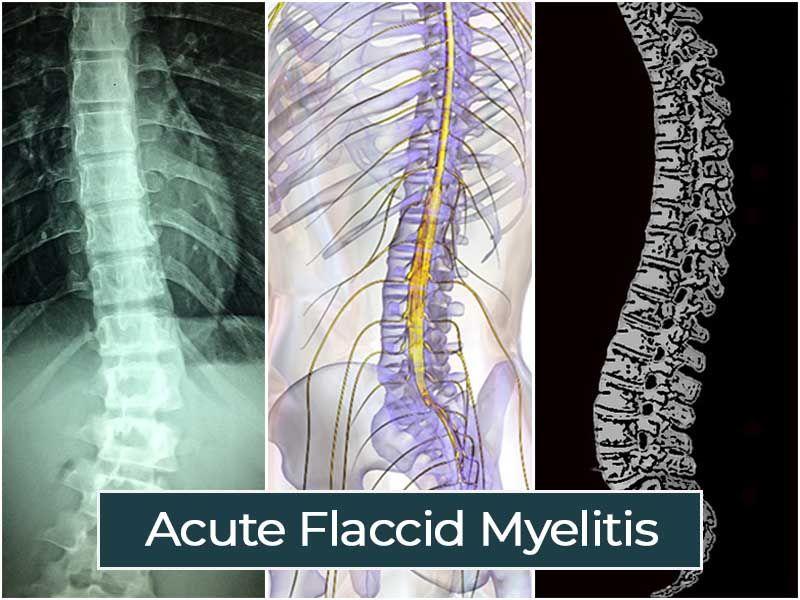Acute Flaccid Myelitis

Acute Flaccid Myelitis is a polio-like sickness that affects the nerve cells in the gray matter of the spinal cord. It is thought to be caused by a viral infection. Children with Acute Flaccid Myelitis have an acute onset of flaccid paralysis that usually happens in the leg or arm. They might also have trouble swallowing or have trouble moving their face. This weakness might progress to the weakness of the muscles that control breathing. It is important to seek care for a child who is developing weakness.
Acute Flaccid Myelitis is a rare but progressively known cause of paralysis that primarily occurs in children. In recent history, this condition has been observed in clusters that appear to befall every two years. The first notable increase occurred in 2014, with additional spikes in 2016 and 2018.
What causes Acute Flaccid Myelitis?
Acute Flaccid Myelitis is thought to be caused by germs such as toxins, viruses, or poisons in the environment. It can also be possible because of certain genetic issues. Several viruses that have been linked to this condition include poliovirus, adenoviruses, and West Nile Virus. Non-polio enteroviruses have also been linked to Acute Flaccid Myelitis and some other diseases of the nervous system like Acute Flaccid Myelitis.
Signs and Symptoms of Acute Flaccid Myelitis
The most common signs and symptoms of Acute Flaccid Myelitis include:
- Sudden loss of reflexes
- Sudden loss of muscle tone
- Sudden leg or arm weakness
Other possible signs and symptoms include:
- Difficulty with swallowing or slurred speech
- Difficulty moving the eyes or drooping eyelids
- Facial weakness or droop
- Pain in the legs, arms, back, or neck
Uncommon symptoms might include:
- Inability to pass urine
- Numbness or tingling
Severe symptoms include respiratory failure. It may be because the muscles involved in breathing become weak. It is also possible to experience blood pressure instability and life-threatening body temperature changes.
Risk Factors Of Having Acute Flaccid Myelitis
The following are the listed factors at risk of getting the disease.
Areas affected by the condition:
- USA
- Australia
- Norway
- France
Anyone can get Acute Flaccid Myelitis, but most cases have been in young children.
Safety Precautions
To prevent Acute Flaccid Myelitis, doctors may recommend that you:
- If possible, avoid being around people who are sick.
- Do not share eating utensils or straws or cups.
- Use disinfectant to clean hard surfaces.
- Have your vaccines on schedule particularly the polio vaccine.
- Using soap and water follows good hand washing practices. Washing regularly is somewhat good advice to avoid illness in general. Similarly, wash your hands before and after eating, taking care of someone who is sick or has a cut, and after using the bathroom or touching an animal.
- Try to be far from mosquitoes that may spread viruses by not going outside when they are biting. Use products that keep away mosquitoes and do not allow water to collect near your home.
Treating Acute Flaccid Myelitis
Here are some things that can help with the symptoms of Acute Flaccid Myelitis. Children with Acute Flaccid Myelitis may need:
- A machine called a ventilator to help them breathe
- Fluids to keep them from being dehydrated
- Physical therapy to make weak muscles stronger
- Pain relievers like ibuprofen to ease pain and bring down fever
- Occupational therapy to help with everyday activities like eating and dressing
Medications for Acute Flaccid Myelitis
There are no precise cures for Acute Flaccid Myelitis. Occupational and physical treatment to reinstate movement is seen as being very significant. Some doctors may recommend treatments such as:
- Antivirals
- Immunoglobulin
- Steroids



